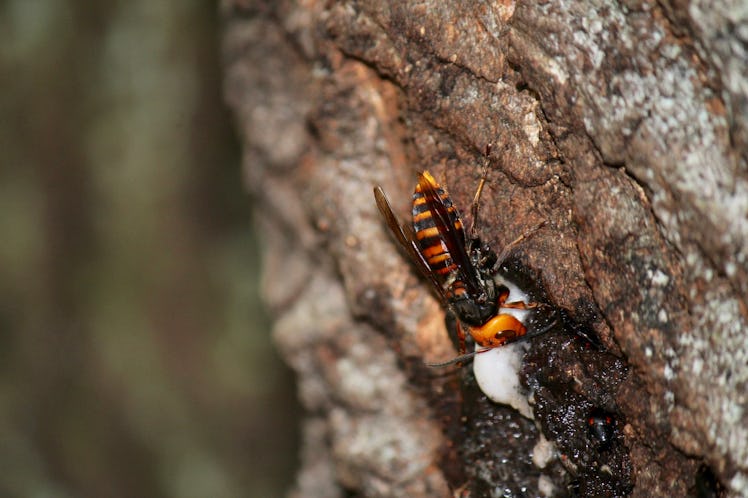
In Case 2020 Wasn't Bad Enough, Now There Are Murder Hornets, Too
It's only May, but so many things have already happened in 2020. President Donald Trump was acquitted following his impeachment trial, the United Kingdom officially withdrew from the European Union, and the global coronavirus pandemic has resulted in shutdowns around the world. But 2020's antics are clearly far from over, as evidenced by the emergence of so-called "murder hornets" in the United States. What are murder hornets? Here's what you need to know about the latest horror of 2020.
The official name of these ferocious insects is actually the Asian giant hornet, and the species is native to Japan. They can be identified by their broad wings and orange and black stripes, and have been nicknamed "murder hornets" because of the destruction they bring to honeybee populations: According to The New York Times, Asian giant hornets decapitate bees so they can feed them to their young. An Asian giant hornet queen can grow up to two inches long, and these insects are the largest hornet species in the world, per TODAY. This is the first time they've made their way to the United States.
If the name "murder hornet" strikes you as terrifying, that's understandable — but unless you work with bees (or are a bee), you probably don't need to worry just yet. Bees, not humans, are murder hornets' primary target, which is still concerning, because the number of honeybees in the U.S. has been declining for years. Murder hornets have joined a host of other threats to bees, such as the "zombie fly," pesticides, food shortages, and diseases. That being said, Asian giant hornets may attack humans if provoked, and kill up to 50 people per year in Japan, though that could be attributed to allergies, the Los Angeles Times reported.
While the Asian giant hornet's sting is not typically fatal, they can be much more toxic and painful than a typical bee or wasp sting. That's why experts suggest not approaching murder hornets if you see them; instead, report them to your state's agriculture department right away. You should also avoid approaching any beehives that you suspect have been taken over by murder hornets. According to CBS News, Asian giant hornets may occupy honeybee hives for a week or more after annihilating the bee population, in order to feed on their larvae and pupae.
Coupled with the coronavirus pandemic and the Australia bushfire crisis earlier in 2020, it may seem like the ominously-named hornets are yet another harbinger of apocalypse. However, experts say that the biggest threat posed by the murder hornets is the devastating impact they could have on honeybee populations — and by extension, the American food supply chain, which relies on pollinating bees. Unlike Asian bees, which have adapted defensive techniques against these murder hornets, American honeybees are not used to Asian giant hornets. If murder hornets are eradicated in North America in the next couple years, then they won't be a huge problem — but if they're not, then they could permanently establish themselves in North America.
For that reason, scientists have launched public outreach efforts to educate people about murder hornets and how to identify and report them. In Washington state, for example, where the murder hornets were first spotted, scientists are encouraging residents to follow a "see something, say something" policy by reporting any murder hornet sightings to the state's department of agriculture. Residents of other states should follow the same protocol if they happen to come across a murder hornet — get ahold of your state's agriculture department so that officials can trace where these hornets are.